Last Updated on January 9, 2024 by Greg Gillson
Many birds sleep at night, tucked away in some dense tree or bush. Likewise there are also birds that are awake and even flying around at night. There are several reasons birds fly at night.
Birds fly at night for one or more of the following reasons:
- They are nocturnal. They sleep during the day and are active at night, or
- They are primarily diurnal but frequently forage at night, or
- They are primarily diurnal but have been disturbed from their night time roost, or
- They are primarily diurnal but carry on singing for courtship or to declare their territory at night, or
- They are primarily diurnal but migrate at night
Let’s discuss this in a little more detail.
Why would a bird fly at night?
You probably know that most owls are nocturnal: sleeping during the day, active at night.
Most. Not all.
There are some owls that are diurnal: carrying on their lives during the daylight hours and resting at night.
Owls have excellent hearing and eyesight.
They can locate hidden prey items by hearing them rustle in the grass.
But don’t think of owls as eating only mice, though some do. Some owls eat primarily moths and other larger insects. Some owls eat wood rats, flying squirrels, and even skunks!
Some owls eat earthworms, fish, salamanders, frogs, snakes, and even other smaller birds.
 |
|
This nocturnal Western Screech-Owl sleeps in a cedar
during the day and flies around at night.
Photo by Greg Gillson
|
Owls aren’t the only birds that fly at night.
A group of birds called nightjars are nocturnal or crepuscular: most active at dawn and dusk.
Nightjars eat moths and large insects at dusk or all through the night. They are camouflaged in mottled gray and brown plumage. They have large eyes. But like the owls, nightjars give away their presence by their voice, jarring the night with their unique calls that often serve as their names, like the Whip-poor-will.
Owls and nightjars aren’t the only nocturnal birds that fly at night, though.
There are some species of birds within other primarily diurnal groups that are nocturnal, or at least, active at night under certain circumstances. And, sometimes, normally diurnal birds fly at night.
Some birds that we think of as diurnal forage at night. They may hunt at night to avoid direct competition with other more aggressive species. Or they may find food that is unavailable during the daytime.
For instance, at night zooplankton moves to the surface of the ocean. Lantern fishes follow. Squid follow the fish. Certain seabirds feed on these fish and squid at night.
Any bird might fly at night if its roost site is disturbed.
An owl might fly into a tree, scattering the songbirds roosting there. A coyote may sneak up on the edge of a pond, causing nearby marsh birds to flee. These noisy fleeing birds may excite other birds until a whole flock is up and flying at night.
Sometimes courtship activities happen at night. There are some birds known for singing at night in the spring or, indeed, nearly year round. Many sing from a perch on the ground. Some birds may sing at night while flying overhead.
Many birds fly at night during their annual migration between nesting and wintering grounds. Not all birds that migrate do so at night, but many do. We’ll discuss migration separately below.
What kind of birds fly at night?
Owls: We’ve discussed that many owls are nocturnal. You may be familiar with the Barn Owl, or hearing owls call at night, including Great Horned Owls, Eastern Screech-Owls, and Western Screech-Owls.
Nightjars: Eastern Whip-poor-wills and Common Poorwills are nocturnal.
Common Nighthawks and Lesser Nighthawks are better though of as crepuscular, flying around at dawn and dusk rather than in full dark..
 |
|
You may hear Killdeer calling and flying day or night.
Photo by Greg Gillson
|
Shorebirds: The unusual American Woodcock is a crepuscular species that feeds on earthworms in Eastern forests.
You may be familiar with the Killdeer at your local wetlands or ball field or shopping mall parking lots. Many people would be surprised to learn that these birds are active day and night.
In fact, due to the tides rising and falling based on moon position, shorebirds forage on exposed mudflats at low tide, day or night.
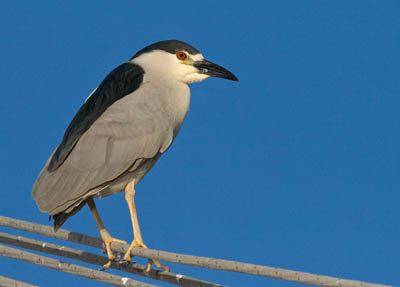 |
|
Black-crowned Night-Herons feed at night, rest during the day.
Photo by Greg Gillson
|
Herons: The Black-crowned Night-Heron and the Yellow-crowned Night-Heron are two species that fly around and hunt at night. During the day they may roost in dense tangles in small groups.
Swallows: Tree and Violet-green Swallows rise several hours before sunrise to fly around “singing” and declaring their territory in the dark.
Albatrosses and petrels: Many seabirds feed on squid and other ocean animals that rise to the surface at night.
Ducks and geese: Very active at night in late winter and early spring. May fly from one pond to another several miles away if they are disturbed at their nightly roosting pond.
 |
|
Northern Mockingbirds sing through the night and through the year.
Photo by Greg Gillson
|
Songbirds: Some birds are well-known night singers.
Two in North America that are most known for singing through the night are Northern Mockingbirds and Yellow-breasted Chats.
American Robins and Hermit Thrushes are early and late singers, as well.
It is believed that these night singers are lonely birds seeking a mate (okay, maybe I’m anthropomorphizing a little bit).
They generally don’t fly around during this singing. Rather, they tend to keep to one perch, sometimes keeping people awake who would rather be sleeping themselves.
Why do birds migrate at night?
Birds migrate between a winter home and a summer home.
Migrating is dangerous and uses a lot of energy. So the rewards have to be higher than the risks of staying put.
Often, birds migrate far north where there is an abundance of insect food in summer to rapidly grow and raise young. But in winter there are no insects to be found. So they may migrate back to the tropics where there are insects in winter, but more birds to compete for them.
Swallows, swifts, pelicans, loons, falcons, hawks, cranes, and hummingbirds migrate primarily during the day. Most other migrant bird species migrate at night. Why?
Migrating birds fly at various heights. Most fly between 5,000 and 20,000 feet.
Small, slow-flying warblers, flycatchers, buntings and others would be easy prey for hawks during the daytime. So they fly under the cover of darkness.
Flying non-stop for hours at a time is also energy-intensive and creates heat. So flying at night at higher elevations keeps birds cooler. (source)
What kind of birds migrate at night?
In the previous paragraph I listed a few birds that migrate during the day. Most other groups of birds migrate at night.
Night migrants include insect eaters such as warblers, flycatchers, vireos, tanagers.
Seed eaters migrate at night, too. These include sparrows, buntings, grosbeaks, cowbirds.
Fruit eating night-time migrants include orioles, thrushes, waxwings.
 |
|
Tundra Swans migrate at night.
Photo by Greg Gillson
|
Ducks and geese migrate at night.
Some birds start migrating as soon as the sun sets. The peak of night time migration is midnight. Most birds keep flying until dawn, depending upon weather conditions.
Migrating birds are easily seen on doppler weather radar. If you are curious, check out the Birds over Portland website that features daily radar animated gifs of the previous night’s migration in NW Oregon.
Many bird fly at night, for various reasons. You may hear them if you are outside at night in a quiet area. You may observe birds flying against the moon during migration. But mostly, the movement of birds at night is hidden from our view. Just know that it is happening. We have a lot to learn about the natural world.
Wrapping Up
Not all birds are awake at night! Most bird species follow a diurnal pattern, meaning they’re active during the day and sleep at night. However, there are some special cases where you might see or hear birds bustling about after dark. Here are a few reasons why some birds might be awake at night:
Nocturnal birds: Certain species have evolved to thrive in the darkness. Owls, nighthawks, whippoorwills, and some seabirds are nocturnal hunters, using their keen senses of sight and hearing to navigate and find prey under the cover of night.
Migration: During migration, some birds travel at night to avoid the heat of the day or predators. The cooler temperatures and calmer winds can make nighttime journeys more efficient and safer.
Territorial defense: Some birds, especially songbirds, might vocalize at night to defend their territory from potential intruders. This is more common during breeding season when competition for resources is heightened.
Artificial light: Light pollution from cities and towns can confuse birds, disrupting their natural sleep-wake cycles and sometimes leading to nighttime activity.
Feeding opportunities: Certain food sources might be available at night for some bird species. Insects attracted to artificial lights, blooming night-flowering plants, and even discarded human food can draw birds out after dark.
Unusual circumstances: Stressful situations like loud noises, storms, or predator activity can disrupt a bird’s sleep patterns, leading to temporary nighttime activity.
Frequently Asked Questions
How do you stop birds from chirping at night?
It’s important to understand that birds chirping at night usually have a reason, and silencing them completely is not always the best or most ethical approach. However, there are some ways to potentially reduce nighttime bird activity near your home:
Address the reason:
- Nocturnal birds: If the birds are naturally nocturnal, like owls or nighthawks, there’s little you can do to stop them entirely.
- Migration: During migration periods, the activity might be temporary and will subside naturally.
- Territorial defense: Consider attracting other birds during the day to distract them, perhaps with a different feeder or bird bath location.
- Artificial light: Turn off unnecessary outdoor lights or use motion-sensor lights to minimize disruption to their natural sleep cycles.
- Food sources: Remove potential nighttime food sources around your home, like trash cans or overflowing feeders.
Discourage them safely:
- Sound deterrents: Owl decoys or ultrasonic devices can sometimes deter birds, but use them cautiously and sparingly as they can affect other wildlife too.
- Visual deterrents: Reflective surfaces like hanging CDs or balloons might startle birds, but ensure they’re not harmful to them.
- Netting: In limited cases, using bird netting over specific areas (like fruit trees) can be considered, but make sure it’s installed safely and monitored to avoid bird entanglements.
Important considerations:
- Be humane: Always prioritize humane methods that don’t harm birds or disrupt their natural behaviors.
- Species identification: Understanding the specific bird species involved helps choose the most suitable approach.
- Respect wildlife: Remember that birds are valuable members of the ecosystem, and their nighttime activity is often a natural occurrence.
What are some birds that sing at night?
The world of nighttime bird song is a fascinating one, offering a different soundscape than the symphony of the day. While most birds follow a diurnal pattern, these nocturnal singers use the quiet darkness to their advantage, communicating through melodies and calls. Here are some of the birds you might hear serenading the night:
North American Night Singers:
- Eastern Screech-Owl: With a repertoire of whinnies, barks, and, of course, screeches, these versatile owls communicate territory, attract mates, and sometimes even mimic other birds.
- Common Nighthawk: These nocturnal insectivores fill the night with eerie, whip-like chirps and booming “booms” as they fly and hunt for moths and other flying insects.
- Chuck-will’s-widow: Their namesake call echoes through the woods, sounding like a mournful plea. These nightjars also have a loud, rapid “chuck-chuck-chuck” song.
- Eastern Whip-poor-will: Similar to the Chuck-will’s-widow, this nightjar boasts a haunting, repetitive “whip-poor-will” call, often heard in wooded areas.
- American Robin: While primarily a daytime singer, robins sometimes break into song on moonlit nights, offering their beautiful melodies under the starry sky.
- Northern Mockingbird: These talented mimics might surprise you with nighttime renditions of songs from other birds, or even their own improvised tunes.
How do you get birds out of your house at night?
Finding a bird trapped in your house at night can be unsettling, but it’s crucial to remain calm and handle the situation safely for both you and the bird. Here are some steps you can take:
1. Minimize movement and noise: Keep the lights off or dimmed, close any doors to the room, and speak softly. This reduces stress for the bird and prevents it from panicking and flying erratically, potentially injuring itself.
2. Open windows and doors: Try to create a clear exit path for the bird. Open windows and doors on the same side of the room the bird is in first, and keep any curtains or blinds open. If possible, leave the room entirely and wait outside for the bird to leave on its own.
3. Use gentle guidance: If the bird remains perched and hesitant to exit, you can try placing a large towel or sheet on the floor near an open window or door. Gently guide the bird onto the towel and lift it carefully, carrying it outdoors without covering its head. This may be necessary if the bird is injured or disoriented.
4. Avoid traps or nets: Resist the urge to use traps, nets, or sticky materials to catch the bird. These can injure or immobilize the bird, causing further distress.
5. Seek help if needed: If the bird is large, aggressive, or injured, seek assistance from a wildlife rehabilitation center or animal control. They have the expertise and equipment to handle the situation safely and humanely.



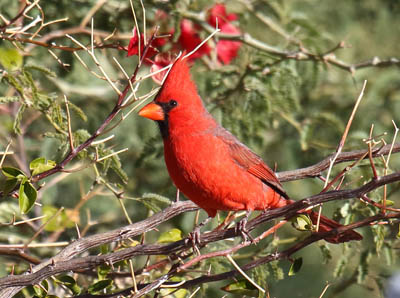
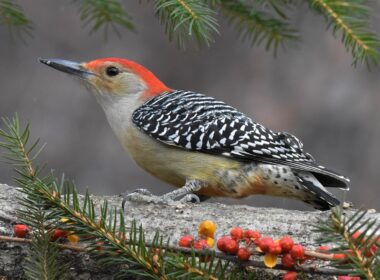
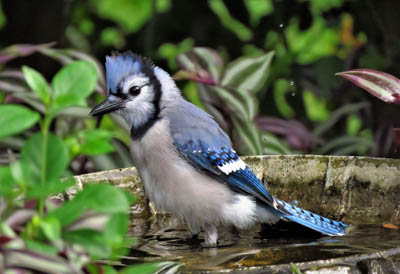
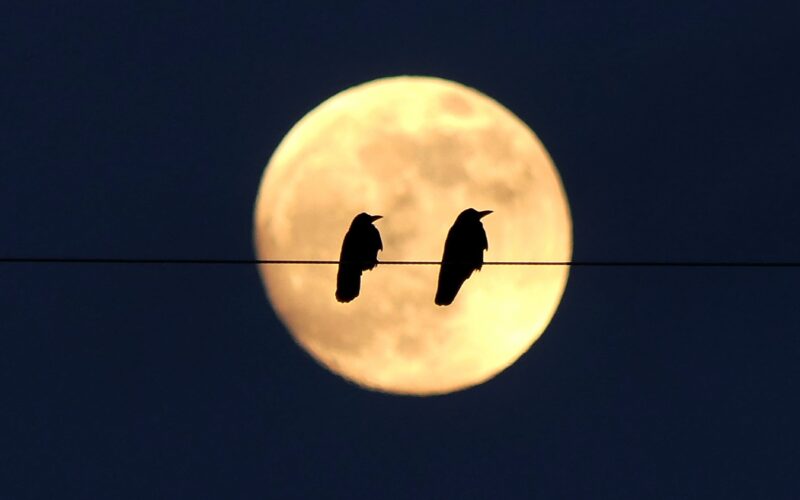
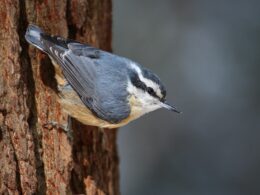
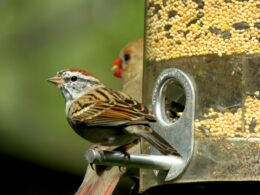
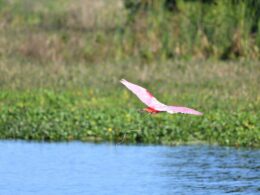
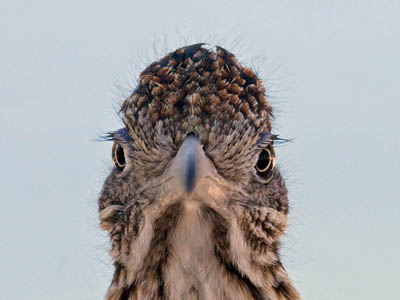
Very helpful and interesting
Thank you for taking the time to express your appreciation.
Very imformational and helpful. Thank you.
So kind of you to say so.
Very interesting I. Never knew ducks and geese flew at night
Yes, they do. Now you know!
Something weird happened to me. At night I was walking my dog with my sister and he chased something so I told my sister to use her phone flashlight to check what it was, it must have been a rabbit that hopped a fence because my dog was sniffing it. But when we returned to the sidewalk I heard the fluttering of wings to my right but didn't see a bird. We don't have nocturnal birds over here and I'm kinda paranoid it could have been a bat, any thoughts? We also walked on the grass a lot so does that affect a birds sleep and startle it.
Also bats usually aren't around here either so I want to know if you have any thoughts about what it was. Really all we did was walk in the grass to see what it was and turn on a flashlight so i was wondering if it possibly could have startled a bird thats sleeping. (I see birds a lot during day but never at night)
No tree? That's where birds usually roost at night. They could get disturbed and fly around. There are a couple of nocturnal birds I can think of, but lawns aren't the typical habitat.
Oh, it could be a fledgling. Young birds often leave the nest before they can fly. The parents take care of them on the ground and in bushes for a couple of days.
I also had a strange experience. I was walking home along a residential tree-lined (big old deciduous trees) street in the City of Vancouver, BC a week ago (September 2022) and something hit me in the side of the head. It was not heavy and I heard/felt fluttering. The nocturnal birds mentioned in the article aren't in this area to my knowledge. I looked around to see if it could be a fledgling but found nothing on the ground, and I don't think it's nesting season for any local birds right now anyway. I was concerned enough to go to ER looking for bat scratches or bites in my hair but they found nothing. Could it have been a humming bird? A bat? Any ideas? It was far too light to be a crow or owl. Thanks for any thoughts!
There are some very large moths that might be your mystery assailant.